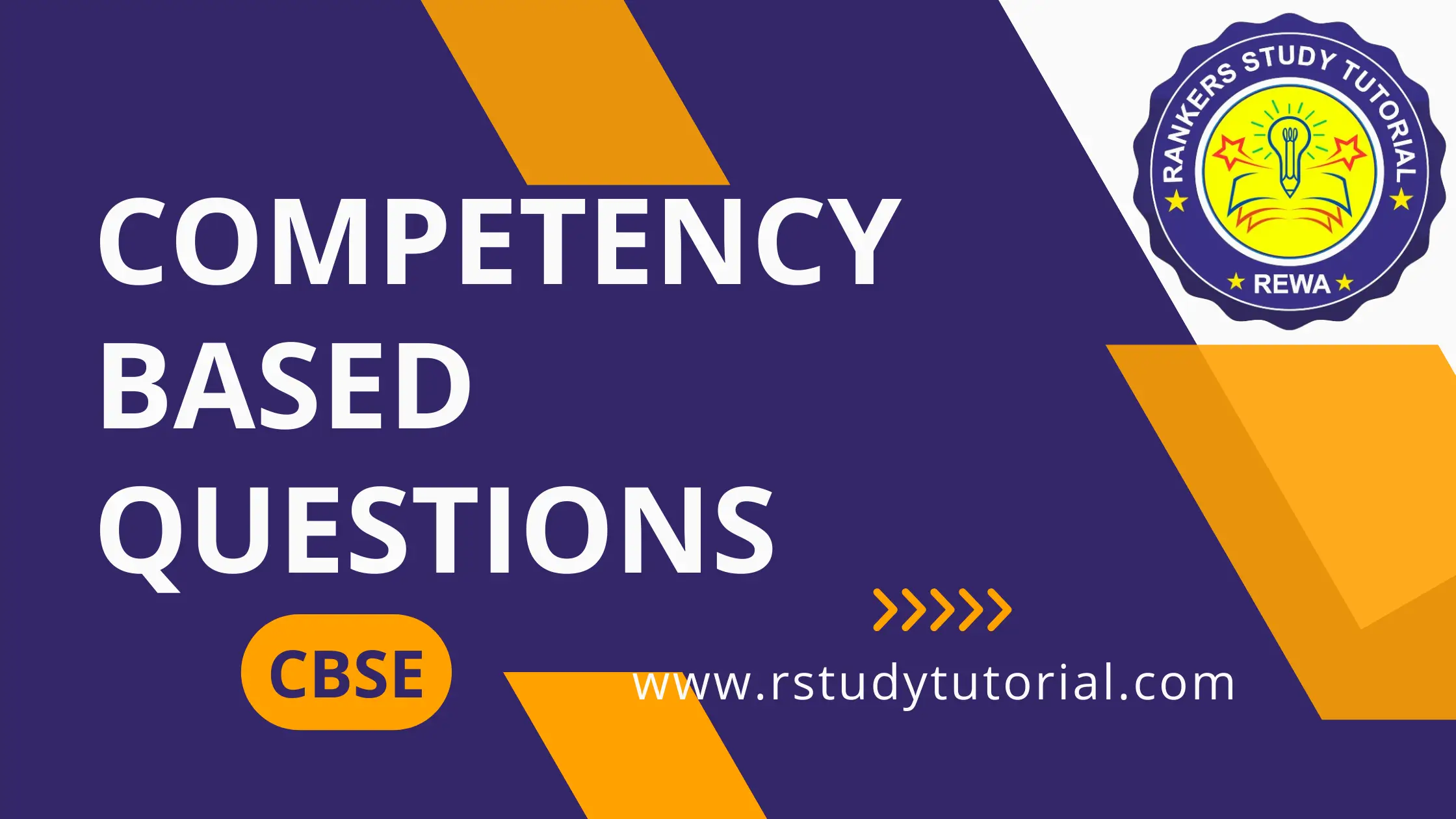Competency Based Questions of Maths for Class 10 Chapter 12 Surface Areas and Volumes
Competency Based Questions are new type of questions asked in CBSE Board exam for class 10. Practising the following Competency Based Questions will help the students in facing Board Questions.
Hint: Apply formulas of surface area of 3-D solids in order to derive the area of a new solid.
Question.1. A medicine-capsule is in the shape of a cylinder of radius 0.25 cm with two hemispheres stuck to each of its ends. The length of the entire capsule is 2 cm. What is the total surface area of the capsule? (Take \pi as 3.14)
(a) 3.14 cm^{2}
(b) 2.7475 cm^{2}
(c) 0.98125 cm^{2}
(d) 0.785 cm^{2}
Answer. (a) 3.14 cm^{2}
Question.2. Arman wants to polish the object, which is composed of a cylinder surmounted by a hemisphere. If the whole length of the solid is 5 m and the diameter of the hemisphere is 7 m, what is the cost of polishing the surface area of the solid at the rate of 50 paise per sq. m.? (Use \pi as \frac{22}{7})
(a) ₹ 1100
(b) ₹ 550
(c) ₹ 110
(d) ₹ 55
Answer. (d) ₹ 55
Hint: Apply formulas of volume of 3-D solids in order to derive the volume of a new solid.
Question.3. Two identical solid cubes of side k units are joined end to end. What is the volume, in cubic units, of the resulting cuboid?
(a) k^{3}
(b) 2k^{3}
(c) 3k^{3}
(d) 6k^{3}
Answer. (b) 2k^{3}
Question.4. A vendor sells glasses of juice, which is in the form of a cylinder mounted by a hollow hemisphere. The diameter of the hemisphere and the cylinder is 8.4 cm. If the total height of the glass is 15 cm, which of these is closest to the volume, in cubic centimeters, of 8 such glasses? (Use \pi as \frac{22}{7})
(a) 599 cm^{3}
(b) 754 cm^{3}
(c) 6032 cm^{3}
(d) 29083 cm^{3}
Answer. (c) 6032 cm^{3}
Hint: Apply formulas of volumes of 3-D solids in order to derive the volume of the new converted solid.
Question.5. Four solids spheres of the same size are made by melting a solid metallic cylinder of base diameter 4 cm and height 36 cm. What is the diameter of each sphere?
(a) 3 cm
(b) 6 cm
(c) 7 cm
(d) 14 cm
Answer. (b) 6 cm
Question.6. A cube of side length 66 cm is filled with spherical metallic balls of diameter 0.6 cm and it is assumed that \frac{5}{8} space of the cube remains unfilled. What are number of balls that can be filled in the cube? (Use \pi as \frac{22}{7})
(a) 952875
(b) 959777
(c) 1165812
(d) 2264031
Answer. (a) 952875
Hint: Apply the formula of surface area of a cone in order to derive the area of the frustum.
Question.7. A circle of radius 5 units is cut into two pieces of 30% and 70% of the total area respectively. The smaller section is curled until the two straight edges meet, and the bottom is made for the cone that is formed by the section. What is the surface area of the cone?
(a) 25π
(b) \frac{39}{2}π
(c) \frac{39}{4}π
(d) 3π
Answer. (c) \frac{39}{4}π
Question.8. A solid cone is divided into a frustum and a smaller cone. The radii of the ends of a frustum are 14 cm and 56 cm, and the height is 30 cm. Which of these is closest to the total surface area of the frustum? (Use π as \frac{22}{7})
(a) 13173 cm^{2}
(b) 21009 cm^{2}
(c) 21827 cm^{2}
(d) 42656 cm^{2}
Answer. (c) 21827 cm^{2}
Hint: Apply the formula of volume of a cone in order to derive the area of the frustum.
Question.9. A student is drinking water in a glass which is in the shape of a frustum of a cone of height 14 cm. The diameters of its two circular ends are 4 cm and 2 cm. What is the capacity of the glass? (Use π as \frac{22}{7})
(a) \frac{217}{3}cm^{3}
(b) \frac{217}{3}cm^{3}
(c) \frac{217}{3}cm^{3}
(d) \frac{217}{3}cm^{3}
Answer. (d) \frac{217}{3}cm^{3}
Question.10. From the top of a solid cone of height 12 cm and base 6 cm of a cone of height 4 cm is removed by a plane parallel to the base. Which of these is closest to the volume of the frustum of the cone? (Use π as \frac{22}{7})
(a) 235 cm^{3}
(b) 364 cm^{3}
(c) 436 cm^{3}
(d) 564 cm^{3}
Answer. (c) 436 cm^{3}
Hint: Use concepts of surface areas and volumes for a variety of 3-D objects in order to apply into real life situations.
Question.11. Abhinav made a model for his school project in the shape of a cylinder of radius 7 cm and height 21 cm, with hemisphere surmounted on one end. He wants to cover the entire model with decorative paper. What is the area, in centimeter square, of paper that is required to cover the model? (Use π as \frac{22}{7})
(a) 1386 cm^{2}
(b) 1232 cm^{2}
(c) 1012 cm^{2}
(d) 976 cm^{2}
Answer. (b) 1232 cm^{2}
Question.12. Asif is melting three solid metal spheres of radii 3 cm, 4 cm, and 5 cm respectively to form a new sphere. How much more is the surface area of the new sphere as compared to the combined surface area of the three spheres?
(a) 4π
(b) 16π
(c) 36π
(d) 64π
Answer. (d) 64π



